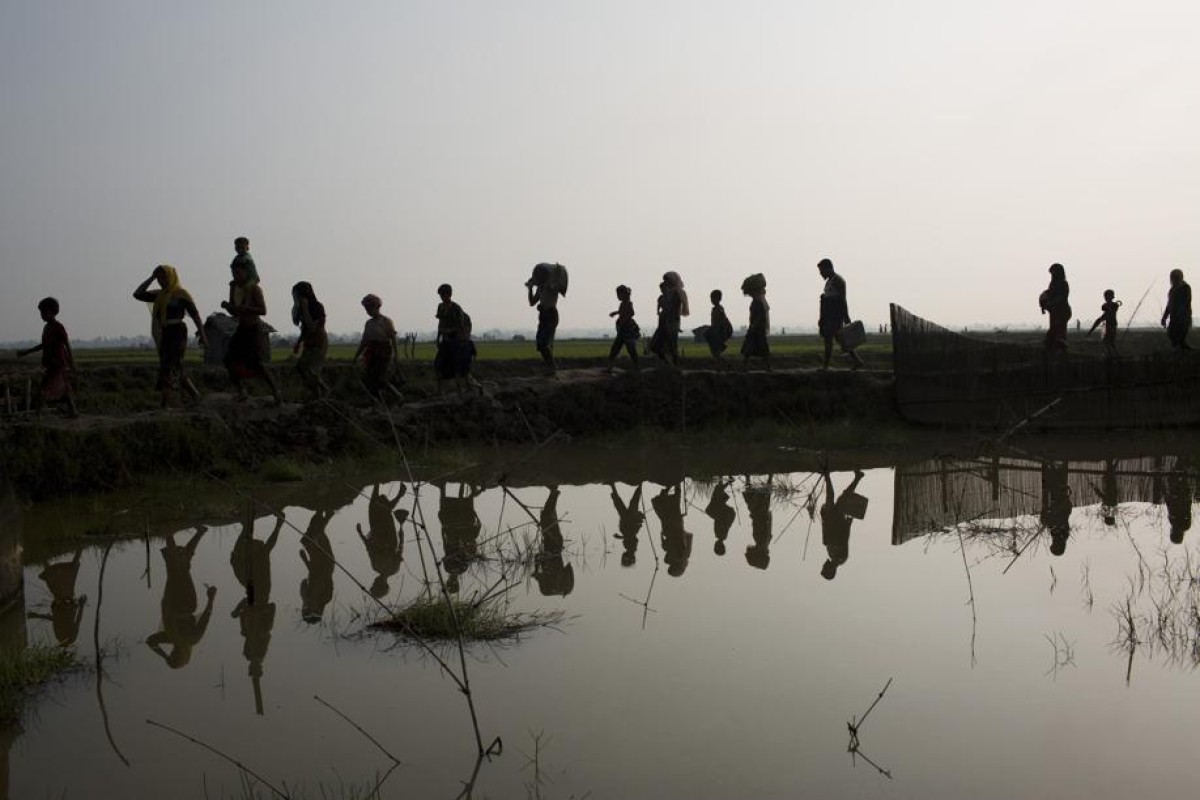
The Myanmar army is one of the best funded in Asia but many of the militants are prepared to fight on
 More than 200,000 Rohingya have fled to Bangladesh since October.
More than 200,000 Rohingya have fled to Bangladesh since October.Farmhand-turned-fighter Ala Uddin left the Rohingya Muslim militants battling Myanmar’s army once he realised they were armed with little more than clubs and knives - a mismatch that has nonetheless drawn many people to join them.
Armed with social-media know-how and believed to be backed by overseas supporters, the Arakan Rohingya Salvation Army (Arsa) appears to have significantly grown in the last year despite remaining outgunned against one of Asia’s largest militaries.
“I didn’t want my children to become orphans,” the 27-year-old said at a refugee camp in Bangladesh as he explained why he deserted the group two weeks ago. “They had some sticks, machetes and two guns for nearly 100 recruits. I realised I would simply die if I went to war with just a piece of wood,” he said.
Better-known locally as Harakah al-Yaqin (Faith Movement), Arsa announced its arrival last October with deadly ambushes on Myanmar border posts in Rakhine state, which is the seat of religious tensions between Muslims and Buddhists.
Myanmar’s army, the Tatmadaw, responded with predictable ferocity.
More than 200,000 Rohingya have fled to Bangladesh since October, bringing with them accounts of murder, rape and burned villages at the hands of the military. Refugees began to leave in large numbers again after Arsa militants raided the army on the night of August 25.
Analysts say those ambushes, which struck more than 30 places, were a failure - many of the militants appeared to have been killed and they did not capture many guns. But they showed that ARSA’s ranks had swelled, helped by the brutal response of Myanmar’s military.
“All the Tatmadaw abuses heaped on the population since October appears essentially to have fanned a popular revolt.”
Statements by Myanmar authorities in the last two weeks describe Arsa sending more than of 150 fighters during dozens of skirmishes. But even if they have the numbers to be taken seriously, they lack the modern weapons to back it up.
According to the Myanmar’s army, the militants use primitive weapons, including gunpowder rifles, homemade guns and bombs, as well as clubs and swords.
In contrast, Myanmar’s army is one of the best funded in Asia. Around 4.5 per cent of GDP is devoted to the army budget, three times what the military gets even in junta-run Thailand. Myanmar says it has killed around 400 Rohingya fighters and lost just 15 personnel since August 25 - although the army often plays down its own losses.
The Rohingya had largely avoided violence until Arsa appeared. Little is known about who runs or finances the group. A report by the International Crisis Group based on interviews with members said the militants answered to a leadership committee of wealthy Rohingya expats in Saudi Arabia. They set up the group in 2012 after anti-Muslim riots swept through Rakhine.
Its most visible face is on-the-ground commander Ata Ullah. He was reportedly born to a Rohingya family in Karachi, Pakistan, before moving to Saudi Arabia.
In recent months they have ramped up their social media presence, including a Twitter account (@ARSA_Official) that is often the first to publish Arsa statements or direct readers to videos.
Ata Ullah starts his statements with Islamic greetings. But the group has not made any public pledges of loyalty to major jihadist groups. Instead Arsa portrays itself as one of Myanmar’s many ethnic rebel insurgencies fighting an abusive central military.
In interviews, Ata Ullah has rejected the terrorist label and said his group do not target civilians. But Myanmar says the group has murdered Buddhist civilians.
Analysts also blame them for a wave of assassinations in remote Rakhine villages of perceived state collaborators in recent months.
Zachary Abuza, an expert on Southeast Asian militant groups, said Arsa had caught the attention of international jihadists. “Whether these guys are actively courting this support or they want it, it might well happen anyway,” he said.
Indonesian police, he said, have stopped two plots to blow up Myanmar’s embassy in Jakarta and Malaysia has arrested militants who were trying to reach Rakhine.
“It’s like watching a train wreck in slow motion,” Abuza said. “So predictable.”